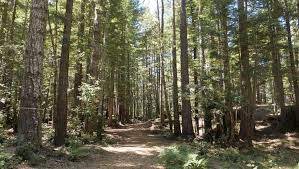
by Bill Schlesinger
As many policy groups—such as Maine’s Climate Council—try to grapple with effective responses to the ongoing global changes in climate, interest has focused on harvesting vegetation as a climate-smart solution. For forests, this involves the use of woody biomass as an alternative to fossil fuels. For the oceans, the harvest of shoreline vegetation, such as rockweed, has strong proponents, who argue that such harvest would remove carbon dioxide from the atmosphere. Both practices fail when confronted with a scientific analysis.
The only way to create a carbon “sink” that helps mitigate climate change is to create a greater long-term storage of carbon outside of the atmosphere. The best examples are in the wood of trees and in soil organic matter, which both are long-lived storage pools.
Wood used in construction is also a form of carbon storage outside the forest, although it balances only a small portion of the fossil fuel emissions of carbon dioxide. One recent compilation suggests that the incorporation of carbon in wooden structures accounts for about 1% of the annual fossil fuel emissions of carbon dioxide to the atmosphere globally. In one region, only 19% of the wood carbon harvested from forests was still found in structures and furniture after 115 years; 65% had returned to the atmosphere!
With the harvest of trees for biomass energy, all of the carbon they contain is released to the atmosphere when they are burned. Young, replacement trees may grow faster, but carbon “neutrality” is only achieved after many decades of regrowth, when the biomass on site equals that which was harvested. In the short-term, forests harvested for biomass energy actually put more carbon dioxide into the atmosphere than burning fossil fuels, despite forest regrowth on harvested lands and the replacement of fossil fuel energy by wood. We should maintain forests for carbon storage, wildlife habitat, and the products they offer—paper and saw timber—not for biomass energy.
Apparently the proponents of rockweed harvest, still smarting from the decision of the Maine Supreme Court that declared rockweed the property of the shoreline land owner, are now promoting the harvest of rockweed as a strategy to mitigate climate change. The assumption is that if you harvest it, rockweed will grow back faster, taking up carbon dioxide from the atmosphere.
But harvesting rockweed does not qualify as a climate-smart strategy. Rockweed is not harvested and burned to replace fossil fuels. Instead, it is sold in a variety of products, including fertilizers, cosmetics, emulsifiers, cattle fodder, and organic foods. The harvest lowers the living biomass of rockweed and increases the emission of carbon dioxide because the rockweed is used in these short-lived products that decay rapidly, releasing carbon dioxide to the atmosphere.
Coastal seaweeds should be maintained for their contributions to carbon storage in wetland soils and sediments. Similar to reforestation, claiming a higher growth rate of recovering rockweed stands, while probably unsubstantiated in any case, is not relevant. It is the pool of carbon stored on land or in coastal vegetation, not the annual uptake, that counts.
References
Hudiburg, T.W, B.E. Law, W.R. Moomaw, M.E. Harmon, J.E. Stenzel. 2019. Meeting GHG reduction targets requires accounting for all forest sector emissions. Env. Res. Lett. 14: 095005.
Johnston, Craig M. T., and Volker C. Radeloff. 2019. Global mitigation potential of carbon stored in harvested wood products. Proceedings of the National Academy of Sciences of the United States of America 116 (29): 14526–31.
Salinas, C. et al. 2020. Seagrass losses since mid‐20th century fueled CO2 emissions from soil carbon stocks. Global Change Biology 26:4772-4784
Schlesinger, W.H. 2018. Are wood pellets a green fuel? Science 359: 1328-1329.
Sterman, J.D., L. Siegel, and J.N. Rooney-Varga. 2018. Does replacing coal with wood lower CO2 emissions? Dynamic lifecycle analysis of wood bioenergy. Environmental Research Letters 13: doi: 10.1088/1748-9326/aaa512